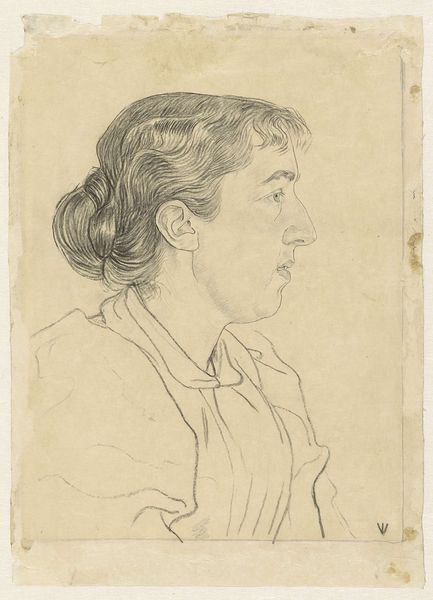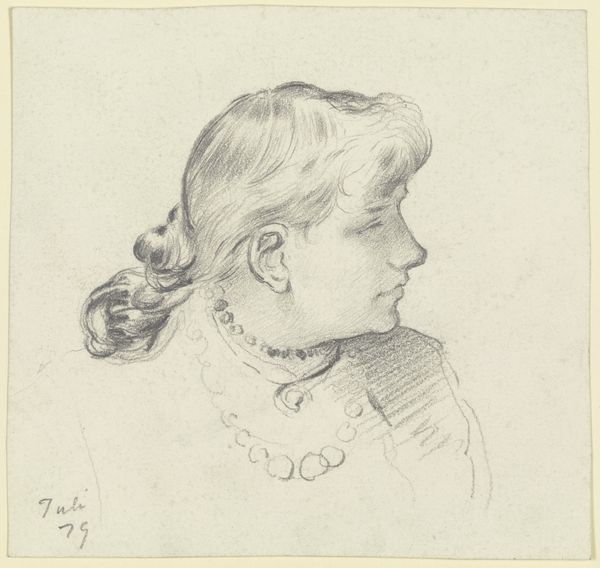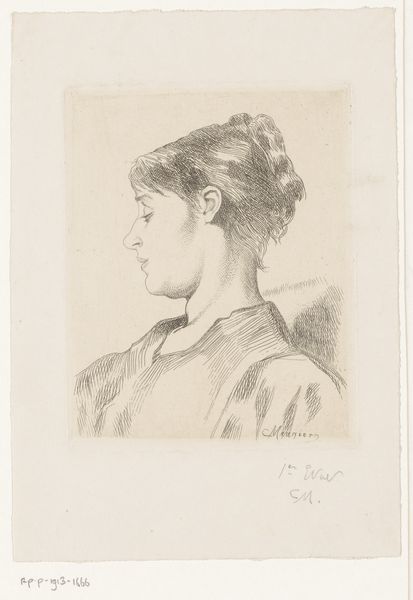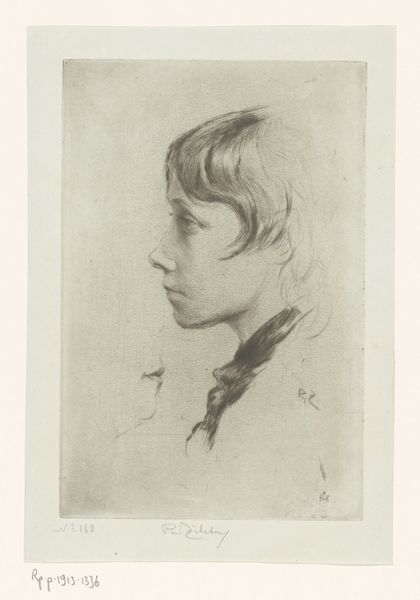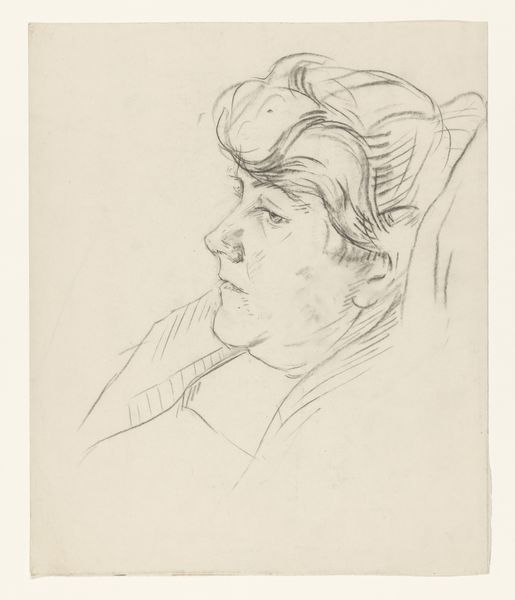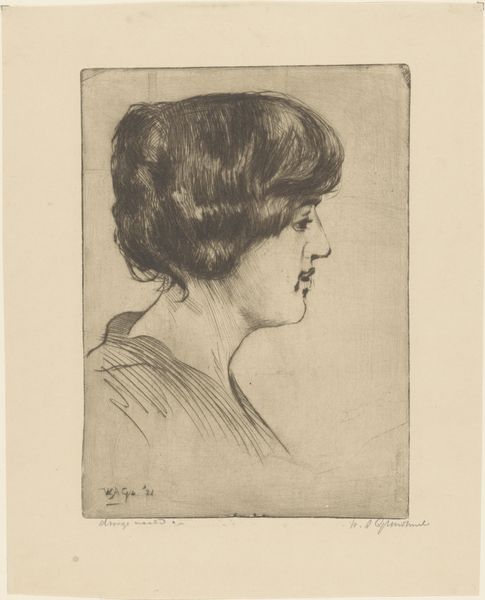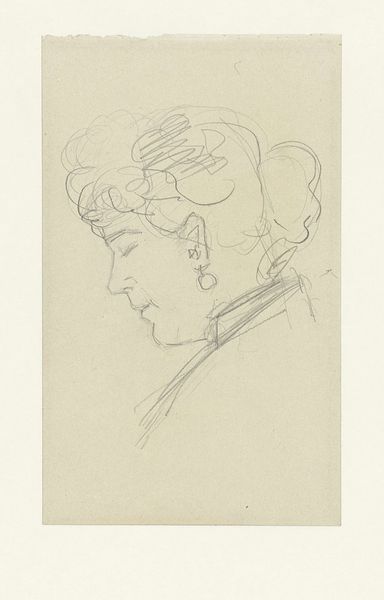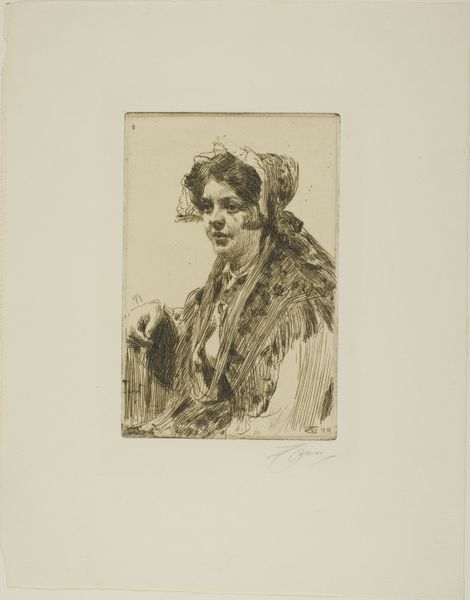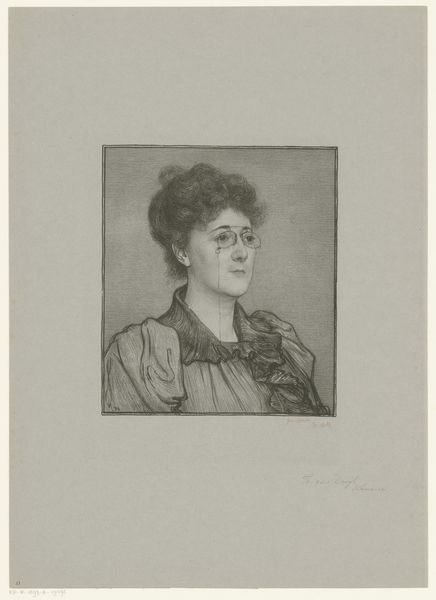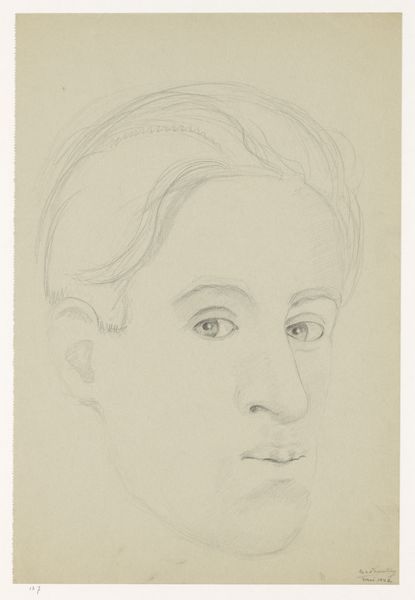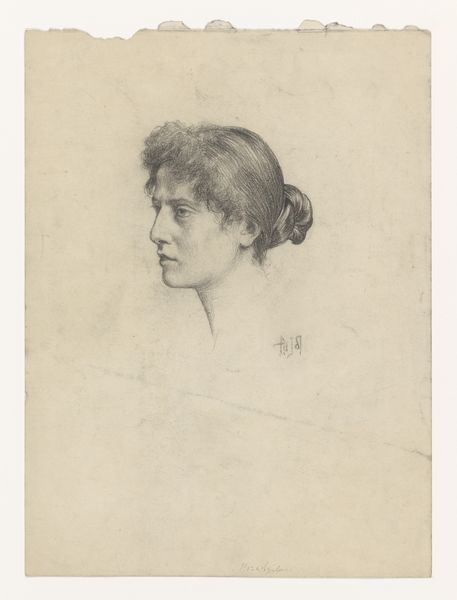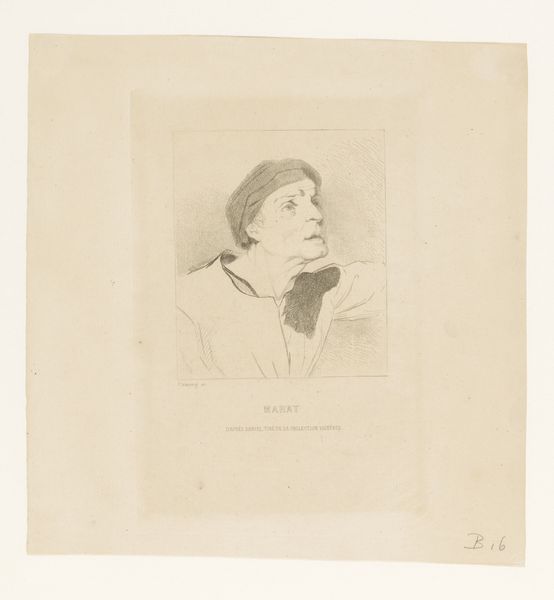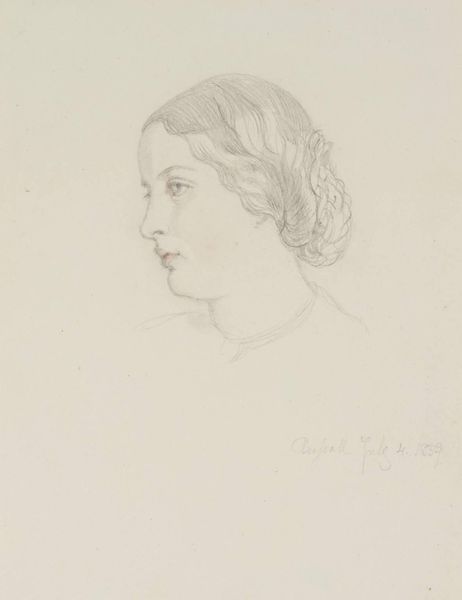
drawing, paper, pencil
#
portrait
#
drawing
#
pencil sketch
#
paper
#
pencil drawing
#
pencil
#
portrait drawing
#
realism
Dimensions: height 479 mm, width 317 mm
Copyright: Rijks Museum: Open Domain
Editor: Here we have Jan Veth’s "Portret van Hélène Swarth," created in 1892. It’s a delicate pencil drawing on paper, currently housed in the Rijksmuseum. What immediately strikes me is the artist’s focus on line and form – the soft curves of her hair versus the sharper angle of her nose. It’s so minimal, yet so expressive. What do you see in this piece? Curator: Indeed, the expressive quality emerges from a meticulous arrangement of forms and values. The composition is strategically divided into a central rectangular block isolating the model and contrasting the empty space, heightening the subject's introspective aura. Note the contrast between the soft, almost ethereal rendering of her hair, achieved through delicate gradations of pencil strokes, against the firmer, more defined lines articulating her facial features. It is this interplay that establishes a visual hierarchy, guiding the eye across the composition. Editor: I notice the dress appears unfinished. Is this intentional? Curator: Precisely! The calculated incompleteness shifts the focus away from superficial details, and back toward the line as defining form itself. Notice also how the light doesn't seem to originate from one specific source; rather, the artist utilizes tone to define structure. It transcends mere representation, instead examining the interplay of texture and mark-making itself. What philosophical conclusions can we draw, knowing the author privileges an intellectual rendering, against the background of the incomplete form? Editor: It really forces you to consider the elements the artist chose to emphasize. This makes me think differently about portraits and their ability to convey ideas beyond simple likeness. Curator: And, furthermore, we are able to investigate what parts of likeness are important or inessential to us through a structured approach of breaking it down. Now, perhaps you have a taste for the kind of depth that formalism can provide when analyzing art?
Comments
No comments
Be the first to comment and join the conversation on the ultimate creative platform.
